Description
Hot and Cold Mirrors are essential optical components designed to manage light and heat in various applications. These mirrors are crafted using high-quality Borosilicate type glass, known for its ability to withstand high temperatures, ensuring durability and reliability in demanding environments. The primary function of hot mirrors is to separate visible light from heat by reflecting the latter. This is achieved with an average transmission of 85% within the 420-700nm wavelength range, while effectively reflecting heat in the 800-1000nm range with a reflectivity greater than 95%. The preferred angle of incidence (AOI) for optimal performance is 0º.
On the other hand, Cold Mirrors are engineered to reflect visible light while allowing heat to pass through, making them ideal for applications where heat removal is crucial. These mirrors operate best at an AOI of 45º, with a transmission range of 800-1200nm and an average transmission greater than 85%. They reflect visible light in the 400-700nm range with a reflectivity exceeding 95%. The use of dielectric multilayer coatings enhances the performance of both hot and cold mirrors, providing high transmission and reflection rates tailored to specific needs.
Both hot and cold mirrors are available in various sizes, ranging from 15mm to 300mm, with a standard thickness of 3.3mm. The surface finish is maintained at 80-50, and the flatness is measured at λ/2 @ 633nm per inch, ensuring precision and quality. Additionally, a protective bevel of 0.3mm x 45º is applied to safeguard the edges. For those with unique requirements, custom mirrors can be manufactured to specific configurations, offering flexibility and adaptability to diverse applications.
Cold Mirror MC0-25.4
Specifications
| Diameter: | 25.4 mm |
|---|---|
| Thickness: | 3.3 mm |
| Surface Flatness: | lambda/2 |
| Surface Quality: | 80-50 scratch-dig |
| Transmission: | 85 % |
| Reflection: | 90 % |
| Transmission Range: | 750 – 1000 nm |
| Reflection Range: | 400 – 700 nm |
Features
- High Visible Transmission (Hot Mirrors): T>85% for 425–700 nm range
- Efficient IR Reflection (Hot Mirrors): R>95% for 800–1000 nm
- High Visible Reflection (Cold Mirrors): R>95% for 400–700 nm
- Strong IR Transmission (Cold Mirrors): T>85% for 800–1200 nm
- Durable Construction: Borosilicate glass for high-temperature operation
- Precision Coating: Dielectric multilayer for stable performance
- Surface Quality: 80/50 finish, λ/2 flatness at 633 nm per inch
- Custom Options: Sizes from 15 mm to 300 mm available
Applications
- Projection Systems: Effective heat control while maintaining image brightness
- Medical and Scientific Instruments: Separation of visible and IR for precision optics
- Stage & Studio Lighting: Thermal management without reducing visible illumination
- Imaging and Display Devices: Enhanced performance through selective wavelength control
- Laser & Photonics Systems: Reliable separation of visible and infrared light
Frequently Asked Questions
What is the purpose of a hot mirror?
What is the most common wavelength range for transmission through a cold mirror?
What is the average transmission range for a cold mirror?
What is the reflective range for a hot mirror for R>95%?
What is the preferred angle of incidence for operation of a cold mirror?
Similar Products
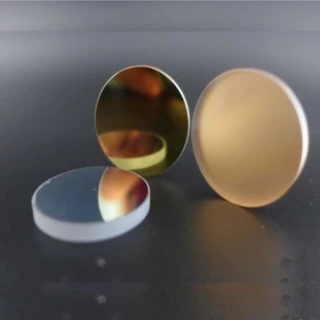
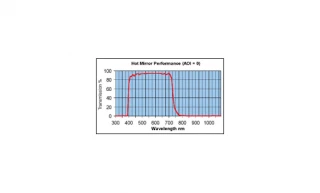
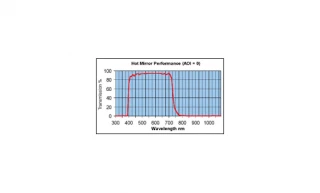
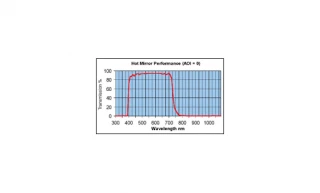

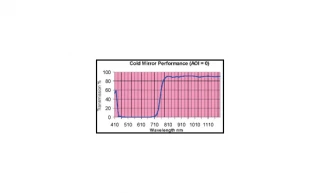
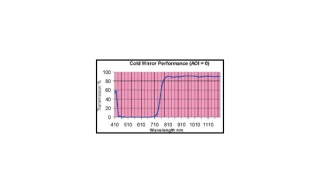

Your inquiry has been received.
Create an account by adding a password
Why create an account?
- Auto-complete inquiry forms
- View and manage all your past messages
- Save products to your favorites
- Close your account anytime — no hassle
